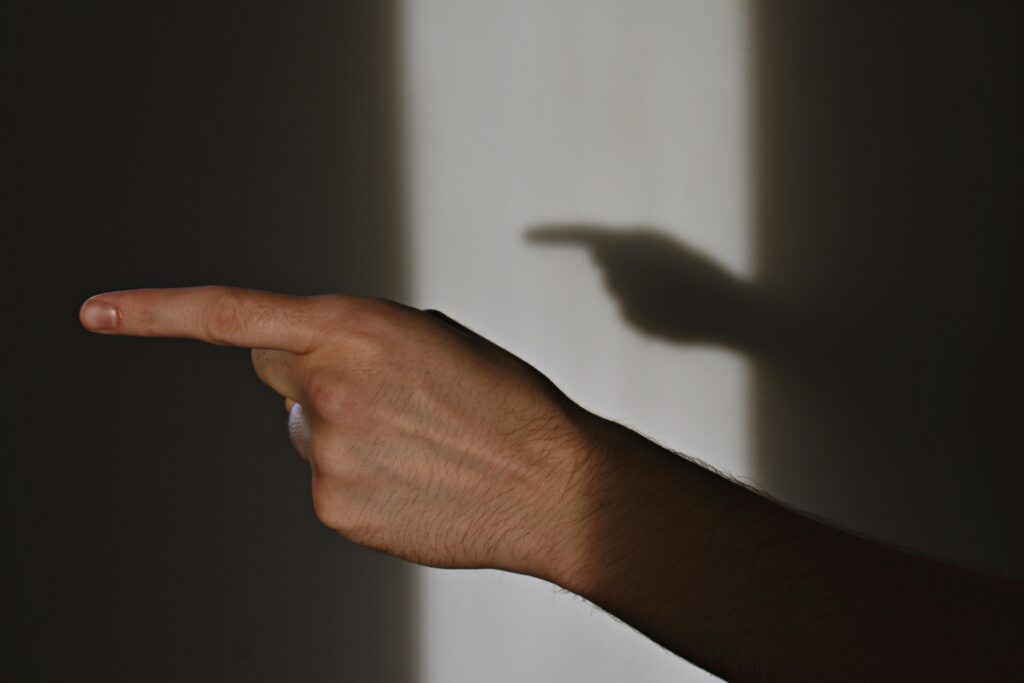1. Thumbs Up

In the U.S., giving someone a thumbs up usually means “great job” or “I’m good.” It’s something we throw around casually in photos or as a response to texts. But in places like Iran, Greece, and parts of West Africa, it’s not so friendly—it’s actually considered a rude or offensive gesture, closer to giving someone the middle finger shares the Guardian.
So if you’re traveling and want to give someone encouragement or approval, it’s best to go with a smile or a nod instead. You definitely don’t want to accidentally offend your waiter or cab driver with what you think is a cheerful thumbs up. It’s a good reminder that gestures don’t translate across cultures as easily as words sometimes do. What feels natural in your hometown might land very differently somewhere else adds Wikipedia.
2. Slurping Noodles

If you slurp your noodles loudly at the dinner table in the U.S., you might get a few raised eyebrows or even a gentle nudge under the table. We’re generally taught that loud eating is rude and that manners mean chewing quietly and keeping our lips closed. But hop over to Japan, and slurping is actually a sign of appreciation—it shows you’re enjoying your meal shares Reddit.
In fact, the louder the slurp, the better! It’s especially common with ramen and soba, where slurping also helps cool down the noodles and enhances the flavor. So while you might be embarrassed by noodle noise at home, in Japan, you’d be considered polite and enthusiastic. It’s one of those culture flips that makes dining abroad so interesting explains Quora.
3. Tipping

In the U.S., tipping is second nature—if you don’t leave at least 15 to 20 percent at a restaurant, it’s seen as rude. We’ve even built tipping into our budgeting and dining experiences. But in countries like Japan and South Korea, tipping is either unnecessary or downright confusing.
Some people might even be offended by it, interpreting it as an implication that they’re not being paid well or need extra encouragement. Service is expected to be top-notch without any extra cash, and attempting to tip can lead to awkward refusals. It’s one of those habits that’s hard to turn off when you’re abroad. But in these countries, it’s best to just say “thank you” and move along.
4. Smiling at Strangers

In America, we tend to smile at strangers on the street or in an elevator—it’s a polite, friendly gesture. You might flash a quick smile at your barista or nod with a grin as you pass someone walking their dog. It’s almost automatic in some parts of the country.
But in Russia, for example, smiling at strangers can come across as insincere or even suspicious. It’s not that Russians are unfriendly, but smiling is reserved for genuine interactions, not casual ones. So if you’re walking around Moscow grinning at everyone, you might get a few strange looks. It’s a great example of how even a simple expression can carry different cultural weight.
5. Left Hand Usage

In many Western countries, we don’t really think twice about which hand we use to eat, gesture, or shake hands. It’s largely a matter of personal comfort or whether you’re left- or right-handed. But in parts of India, the Middle East, and Africa, the left hand is traditionally considered unclean.
It’s typically used for hygiene-related tasks, so using it for eating or greeting someone can be considered rude. If you’re a lefty visiting one of these countries, it can take some serious effort to adjust. You may need to train yourself to switch hands for certain activities, especially when dining. It’s one of those subtle social rules that makes a big difference in how you’re perceived.
6. Eye Contact

In the U.S., direct eye contact is generally encouraged. It shows confidence, honesty, and engagement in a conversation. Teachers and bosses often tell us to “look people in the eye” when we’re speaking or listening.
But in some Asian and African cultures, too much eye contact can be seen as confrontational or disrespectful, especially toward elders or authority figures. It’s more respectful in those places to avert your gaze or look downward. So while you might be trying to show respect and attentiveness, it could be taken as aggression in another context. It’s a small difference that can completely shift the dynamic of an interaction.
7. Red Ink

In most Western countries, red ink might be used by teachers to correct papers or to underline something important. It’s bold, visible, and doesn’t usually carry emotional weight. But in South Korea and parts of China, writing someone’s name in red ink can be alarming.
That’s because red ink is traditionally used for writing the names of the deceased. It’s associated with death and bad luck, and doing it by accident can upset someone or be seen as a curse. So if you’re writing a thank-you note or filling out a guestbook abroad, it’s worth double-checking your pen color. Some traditions are written in red for all the wrong reasons.
8. Nodding and Shaking Heads

In the U.S., nodding means yes and shaking your head means no—it’s basic body language we all grow up with. These signals feel universal because they’re so ingrained in our daily conversations. But in countries like Bulgaria and parts of Greece, the meanings are actually reversed.
A head shake might mean yes, while a nod could mean no, which can be pretty disorienting for travelers. Imagine ordering food or asking directions and getting the opposite of what you think! It’s one of those things that makes communication tricky if you’re relying on gestures alone. Best to stick with spoken language or clarify if you’re unsure.
9. Personal Space

Americans tend to value personal space, often keeping about an arm’s length between themselves and others during conversations. Standing too close can feel uncomfortable or intrusive. It’s something we don’t usually think about until someone breaks that invisible bubble.
But in countries like Brazil, Italy, or Egypt, people are much more physically expressive and tend to stand closer when talking. Touching someone’s arm or shoulder during conversation is totally normal. If you step back, they might step forward again without realizing they’re doing it. It’s a cultural rhythm that can feel intense or warm depending on your comfort zone.
10. Silence

In American culture, silence in conversation often feels awkward. We tend to fill it with small talk or quick follow-up questions. Long pauses can make people nervous, like something’s wrong or the other person is disinterested.
But in countries like Finland or Japan, silence is not only acceptable—it’s appreciated. It shows thoughtfulness, respect, and the ability to listen without interrupting. People don’t feel pressured to respond right away, and quiet moments aren’t automatically uncomfortable. It’s a reminder that not all communication needs to be constant and loud.
11. Crossing Fingers

In the U.S., crossing your fingers means you’re hoping for good luck or wishing for the best. Kids might do it before a test or when they really want something to happen. It’s a harmless, hopeful little gesture.
But in Vietnam, it’s considered extremely rude—similar to making an obscene gesture. That’s because it resembles a certain part of the body, making it very inappropriate. It’s the kind of cultural difference that’s easy to overlook but important to learn. One innocent hand gesture could accidentally offend someone if you’re not careful.
12. Pointing

Pointing at something or someone feels normal to many Americans. We use it to indicate directions, choose items on a menu, or point out interesting things. It’s a basic part of how we communicate.
But in countries like Indonesia or Malaysia, pointing with your index finger can be seen as disrespectful or aggressive. People there often use their whole hand or even their thumb instead. It may seem like a small thing, but it can change how you’re perceived in a public space. It’s always good to watch how locals gesture and follow their lead.
13. Whistling

In the U.S., whistling can mean you’re cheerful or trying to get someone’s attention—like calling a dog or flagging down a taxi. Sometimes people whistle a tune while they’re walking or working, and no one thinks twice about it. But in countries like Haiti or some parts of Russia, whistling indoors is considered bad luck.
It’s believed to summon evil spirits or bring about financial misfortune. So casually whistling while shopping or waiting for the elevator might raise eyebrows or even alarm someone. It’s one of those superstitions that sticks in certain places, even if you don’t believe in it yourself. Better to stay quiet and avoid tempting fate.
